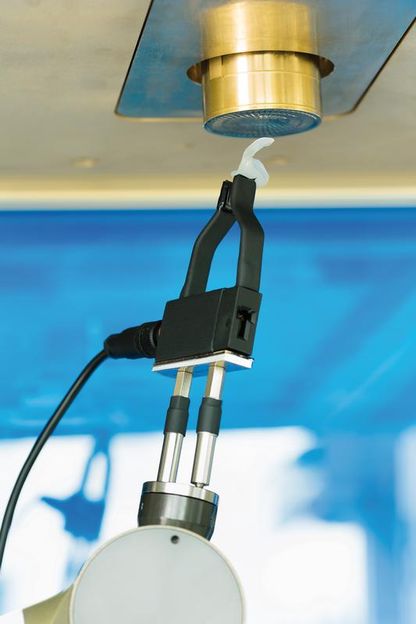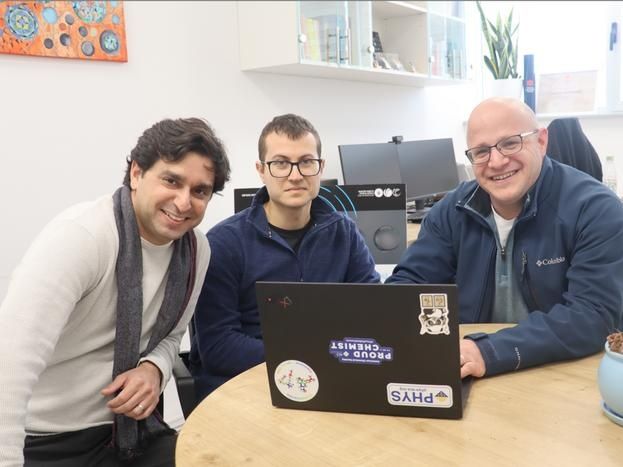Applying electron beams to 3-D objects
The Fraunhofer Institute for organic electronics, Electron Beam and Plasma Technology FEP now has the technological means of applying electron beams very flexible to 3-D objects through use of its new electron wand of the Swiss company ebeam by COMET.

Electron exit window and robotic handling for applying electron beams over three dimensions
© Fraunhofer FEP, Jürgen Lösel
Electron beams are useful in many different applications. They reliably sterilize seed, can weld small structures precisely and reliable, and cure decorative paint. Usually this involves either planar, flexible, or slightly curved surfaces. However, applying electron beams homogeneously to 3-D objects of any size or shape has not been so simple up to now.
Scientists at Fraunhofer FEP have now elegantly combined an electron wand with a six-axis robotic manipulator in order to be able to treat substrates with complex shapes as well as spherical objects, for example.
“The electron wand remains stationary in this process”, explains Javier Portillo, a scientist at Fraunhofer FEP. “The manipulator rotates the objects within the irradiation zone in a way, that the surface will be treated homogeneously. This creates the maximum degree of freedom when applying an electron beam to a 3-D-object.”
Normally you need several electron-beam sources to treat 3-D objects. Homogeneous application does not take place reliably everywhere in this process. The process of multiaxial moving the object within the electron treatment zone can hereby generate advantages. The application of electron beams to optical components is also conceivable. These primarily involve hydrophilic surfaces found in a wide variety of applications, such as safety glasses with antifogging coatings, diffusing screens and lenses, and anti-condensation coatings for air conditioners and sensors in medical engineering. Scientists can apply the new technology to develop customized processes for its industrial clients that meet specific demands – including being able to treat 3-D objects with various geometries – to suit even the most diverse existing production lines.
The symbiosis of an electron beam and robotic handling can make production processes more effective and economical.
Organizations
Other news from the department science

Get the chemical industry in your inbox
By submitting this form you agree that LUMITOS AG will send you the newsletter(s) selected above by email. Your data will not be passed on to third parties. Your data will be stored and processed in accordance with our data protection regulations. LUMITOS may contact you by email for the purpose of advertising or market and opinion surveys. You can revoke your consent at any time without giving reasons to LUMITOS AG, Ernst-Augustin-Str. 2, 12489 Berlin, Germany or by e-mail at revoke@lumitos.com with effect for the future. In addition, each email contains a link to unsubscribe from the corresponding newsletter.
Most read news
More news from our other portals
Last viewed contents
New type of memory effect in Transition Metal Oxides
Using supercomputer and chemistry to solve global problems - Ames Laboratory research expected to produce terabytes of new data on global warming and water purification
Ionization_energies_of_the_elements_(data_page)
Texize
Physicists capture first images of atomic spin
2-Butoxyethanol
Monte_Carlo_Universal
Intricate, curving 3D nanostructures for biological and materials applications
Measurement method for determining concentrations in dust deposition
Lipoxygenase
Atmospheric Measuring Device for Understanding Smog Formation - Quantitative assessment could lead to more effective smog-control strategies




























































